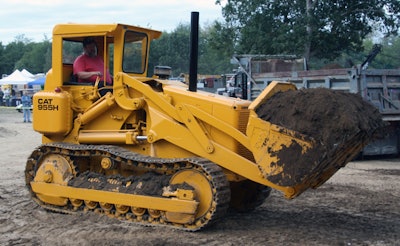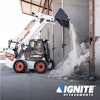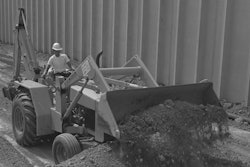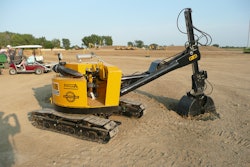
Major events tend to impact the type and design of construction equipment as the manufacturers react to them. “When the demand occurs, then the manufacturer usually comes to the fore and solves the problem,” says Keith Haddock, national director of the Historical Construction Equipment Association (HCEA) and author of several books on the history of construction equipment.
50 Years of Construction Equipment History: Interactive Timeline
The 1960s were a boom time for the heavy construction market. Work on building the Interstate Highway System was in full swing. It was authorized by the Federal Aid Highway Act of 1956, popularly known as the National Interstate and Defense Highways Act of 1956. It took 35 years to complete.
This work impacted the type and size of equipment available. During this time period, many high-horsepower motor-wheel scrapers were introduced to aide with the massive amounts of materials that needed to be moved. “The most popular way of moving dirt, as opposed to rock, was scrapers,” says Haddock. “There were literally hundreds of scrapers working on these projects.”
Machine size also grew. “The ’60s was the decade of the monster machines,” says Haddock. During this time, equipment used in surface mining grew, with the world’s largest dragline, the world’s biggest shovel and a 360-ton haul truck. With the exception of haul trucks, which have slowly grown to 400 tons, the size of these machines has not been exceeded since. “Since then, the machines have become more efficient and more productive, but not bigger.”
In 1973, the country was plagued by the Arab oil embargo. This resulted in an immediate demand for coal. “The oil companies began to buy assets in coal,” recalls Haddock. “The result was that manufacturers of large earthmoving equipment became inundated with orders. If you wanted to order a large machine in the 1970s, the waiting list was three to four years.”
Industry Sees Dramatic Shift
The ’80s ushered in a recession that transformed the industry. “Over a few years, a massive change took place. A lot of companies failed,” recalls Haddock. “There was a lot of consolidation. If you look at the list of manufacturers in 1980, you will find in the ’90s most of them had new owners or were gone altogether.
“In the ’60s and ’70s, there were four major companies supplying earthmoving equipment with equal share,” he continues. These included International Harvester, Euclid, Caterpillar and Allis Chalmers. “Of those four, only Caterpillar is around in that name. The heritages of those companies are still around, but the companies themselves all changed in the ’80s.”
The ’90s ushered in a wave of environmental laws that continues to this day. The most notable is the diesel engine emissions standards that kicked off with Tier 1 in 1996. “They forced the manufacturers to make cleaner and more efficient diesel engines,” says Haddock.
The most recent recession has also made profound changes in the way equipment is acquired. “The most recent downturn that started in 2008 has given a substantial increase or movement toward rental vs. ownership,” says John Patterson, former CEO and President of JCB. “When you consider 20 years ago, rental was less than 20% of the market in the United States; now over 40% of all equipment is purchased by rental companies.” But with increasing rental there are more challenges for equipment manufacturers. “Rental companies, in some cases, require a different specification. They do not need all of the bells and whistles and options that a private contractor may want.”
The pressures on operating margins also led manufacturers to look for non-traditional equipment solutions. The competitive environment, electrification of the major engine components and the spike in diesel fuel prices in the not too distant past created an environment where manufacturers began to develop more energy efficient alternatives to the conventional powertrain systems. “Electric drive powertrain technology and hydraulic hybrid technology have increased machine level efficiency,” says Chuck Sahm, automation & enterprise solutions theme manager, Caterpillar.
50 years of construction-equipment history in an interactive timeline



















